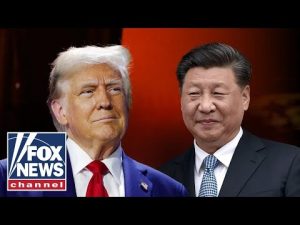In a surprising twist in international trade relations, the European Union has decided to put its counter-tariffs on hold. This decision comes on the heels of President Donald Trump’s announcement of a 90-day pause on reciprocal tariffs. It seems that the EU is choosing to extend an olive branch—if that olive branch were grown in a garden of negotiations—rather than escalate the trade tensions that had been brewing like a storm cloud threatening rain.
According to reports, European Commission President Ursula von der Leyen took to X, formerly known as Twitter, to share the news. She stated that the EU wants to give negotiations a fair shot while it finalizes its own set of countermeasures. The catch? If negotiations don’t lead to satisfactory outcomes, the EU is ready to pull out the big guns and implement those counter-tariffs they had initially planned. It’s almost as if they’re saying, “We’re giving you a chance, but don’t think we’re just going to sit here and twiddle our thumbs if things go south.”
Under the previous arrangement, the EU was looking at a hefty 20% tariff on all goods in response to Trump’s policies. But with this pause, U.S. imports from the EU will now see a lower baseline of 10%. However, not everything is sunshine and rainbows; steel, aluminum, and cars will still face a steeper 25% rate. So while some items might start to feel less pricey, others will still pack a hefty punch at the checkout line!
What’s interesting is that about 75 countries have reportedly requested talks with the Trump administration during this three-month period. It’s as if nations are lining up to shake hands and share ideas—imagine a global high school dance where everyone is a bit nervous but hopeful for a sparkling connection. The timing couldn’t be better for the U.S. to negotiate better deals, especially with so many eager partners waiting to take a spin on the diplomatic dance floor.
In contrast, the situation for the United Kingdom remains largely unchanged. The UK already had that lower 10% tariff in place, albeit with higher rates for certain products like cars. This means they get to watch the negotiations unfold without much impact on their own operations. They’re likely enjoying their tea while everyone else is busy schmoozing over trade agreements.
As this story continues to develop, all eyes will be on whether these negotiations yield favorable results. It’s anyone’s guess if the EU will stick with their pause or if they will end up cranking up the tariff dial back to eleven. For now, it appears there’s a flicker of hope in the air, as both sides look to navigate the intricate world of tariffs and trade with a little less hostility and a little more goodwill. Only time will tell if this goodwill leads to stronger economic ties or if it all fades away like a summer thunderstorm.







